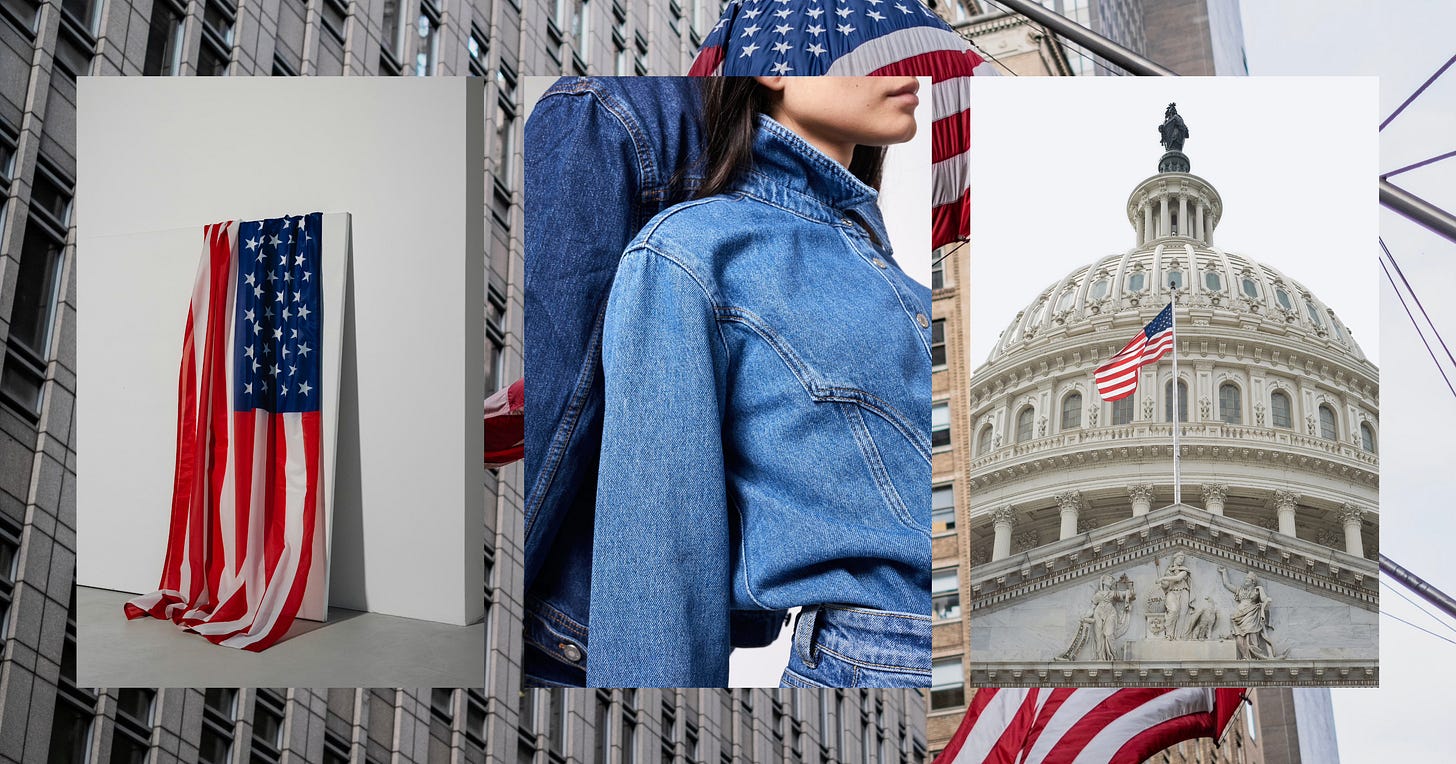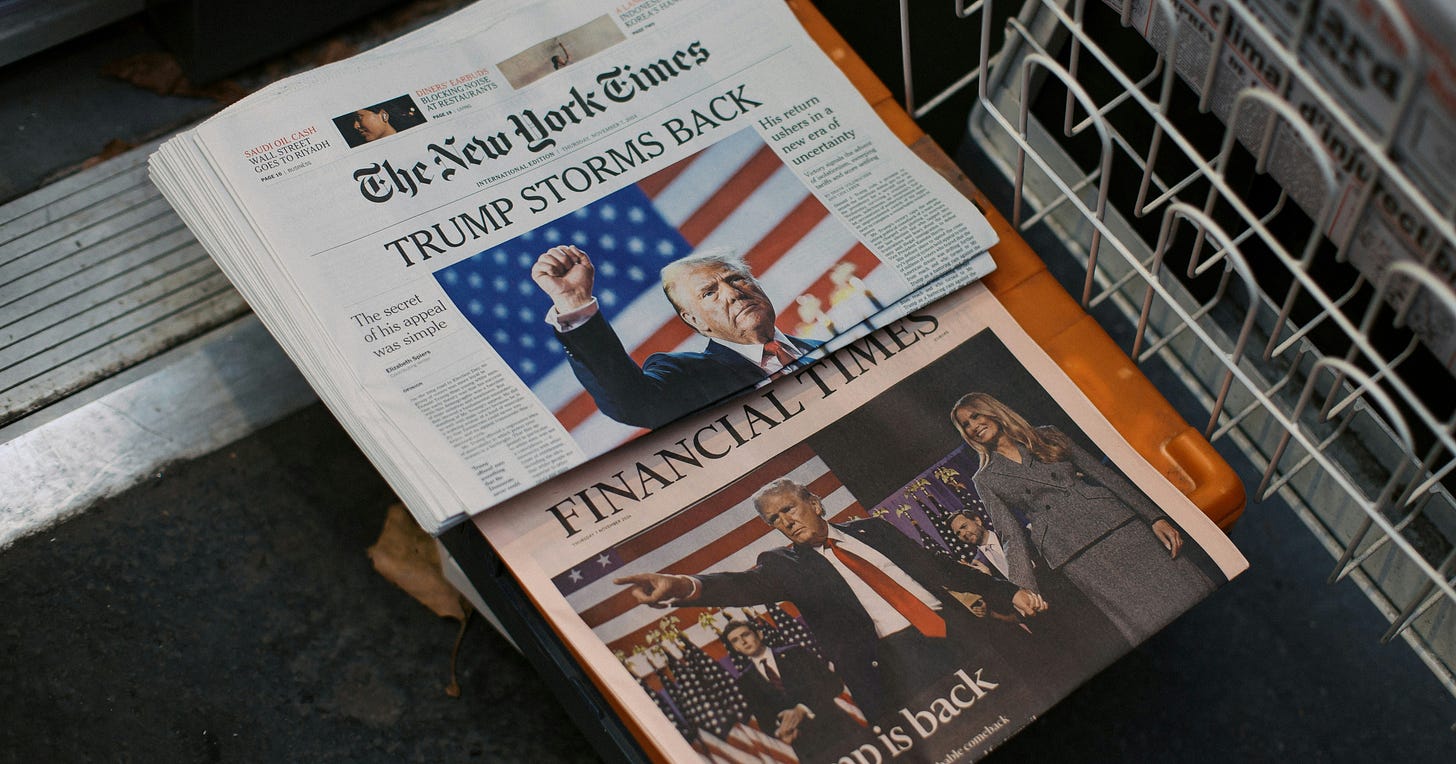Who’s Regulating Fashion When Washington Won’t?
What’s next for US fashion regulation in a federal policy void?
The fashion industry has long operated in a regulatory vacuum, accountable to no one but itself, where self-policing and voluntary commitments allow it to control the narrative without facing enforceable consequences. But as climate risks accelerate, supply chain injustices persist, and environmental degradation worsens, it’s painfully clear this approach doesn’t work.
Voluntary commitments—whether corporate environmental targets or industry-led initiatives—aren’t working at the scale and pace needed.
Despite ambitious sustainability pledges and attention-grabbing headlines, greenhouse gas emissions are still increasing, garment workers continue to face exploitation, and brands remain stuck chasing short-term profits.
Meanwhile, global climate goals are slipping further out of reach, with the world on track for 3.1 degrees of warming—far beyond the 1.5-degree target needed to avert catastrophic impacts.
While voluntary measures let brands control the narrative, they’ve done little to drive meaningful progress. Even genuine strides are the exception—not the norm—in an industry that rewards cutting corners.
For many brands, regulation represents a threat to their autonomy and bottom line. Compliance with stringent environmental and labor standards often requires significant investment in supply chain transparency, sustainable materials, and fair wages—costs that many companies are unwilling to absorb without external pressure. Instead, they opt for superficial sustainability initiatives that allow them to look progressive without making substantive changes to their operations.
Moreover, the industry’s reliance on fast fashion and overproduction is fundamentally at odds with sustainability.
Regulations that mandate reduced emissions, waste reduction, or fair labor practices would require a complete overhaul of the current business model—a prospect that many brands view as financially untenable.
This resistance is compounded by fears of losing a competitive edge. In a global market with razor-thin profit margins, brands worry that stricter regulations in one region could drive production to less regulated markets, undermining their ability to compete.
The fashion industry’s resistance to regulation isn’t just about individual brands—it’s a systemic issue rooted in a culture of self-preservation. Industry bodies often push back against legislation aimed at increasing supply chain transparency, arguing it would create administrative burdens and expose brands to reputational risks.
This resistance is fueled by a lack of consensus within the industry itself. While some forward-thinking brands have embraced sustainability as a core value, others remain deeply entrenched in outdated practices. This fragmentation makes it difficult to present a unified front, allowing industry leaders to delay or dilute regulatory efforts by pointing to voluntary initiatives as evidence of progress.
While brands and industry groups often cite consumer demand as a driver of sustainability, they also use it as a shield against regulation—arguing that if consumers truly cared, they'd "vote with their wallets."
But awareness doesn’t automatically lead to action. Even when consumers understand the environmental and social costs of their shopping choices, competing priorities like affordability, convenience, and perceived value often take precedence. This reality exposes the flaw in relying solely on market-driven change.
Without regulation, the burden of driving systemic change falls disproportionately on consumers, who are expected to make "better choices" in a system designed to make the unsustainable option the easiest and cheapest. This creates a vicious cycle: brands resist regulation, pointing to consumer behavior, while consumers lack the systemic support needed to drive change.
Voluntary commitments often amount to greenwashing, failing to address the urgent environmental and social crises we face. What’s needed is a regulatory framework that levels the playing field, ensuring all brands are held to the same standards—where sustainability isn’t a competitive disadvantage but the baseline.
And without that framework, the industry isn’t just vulnerable to its own failures—it’s at the mercy of shifting political winds.
Without a robust, resilient regulatory framework to enforce accountability, the industry remains exposed to the whims of federal leadership, where hard-won progress can be undone with the stroke of a pen... or Sharpie.








